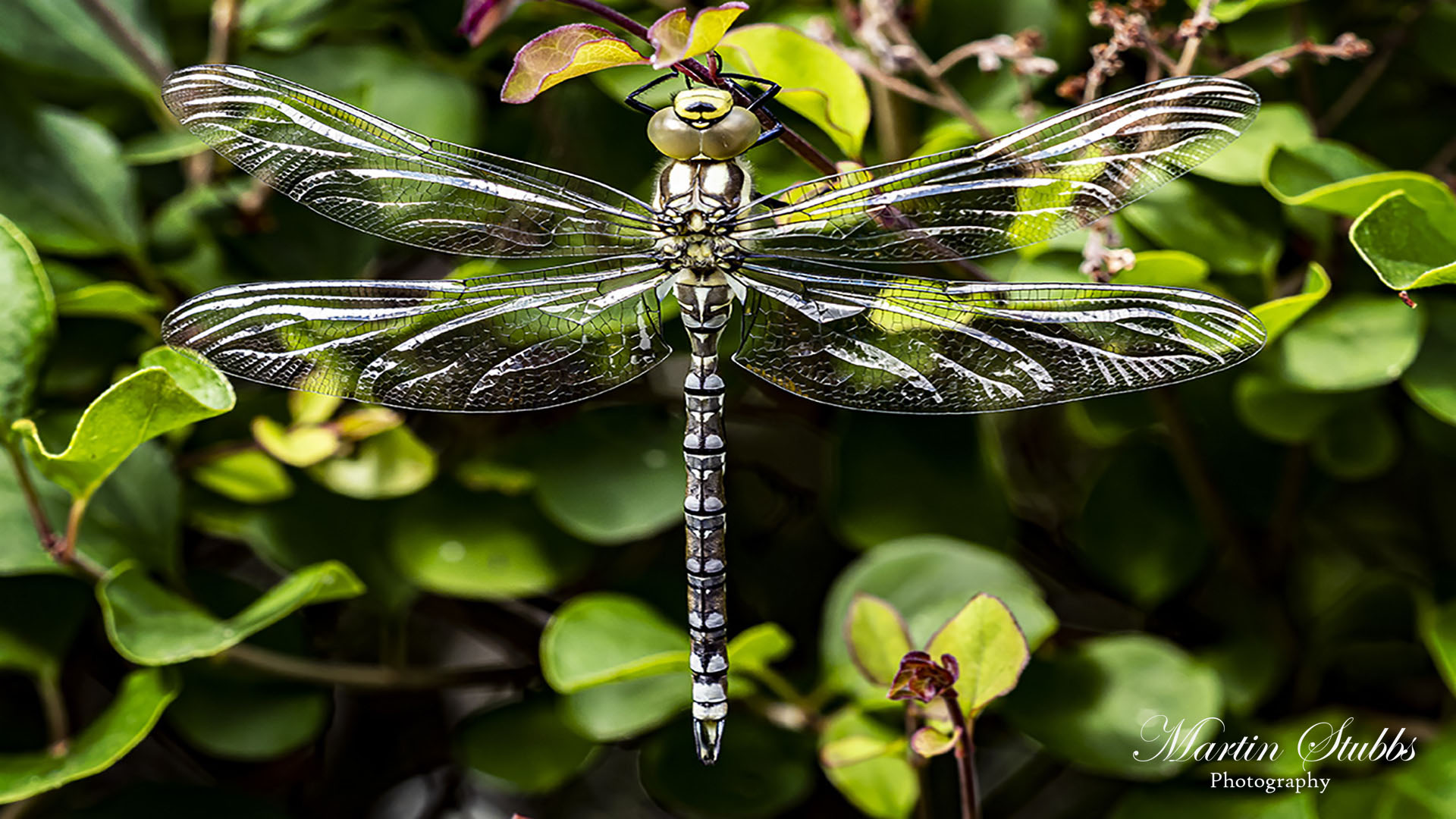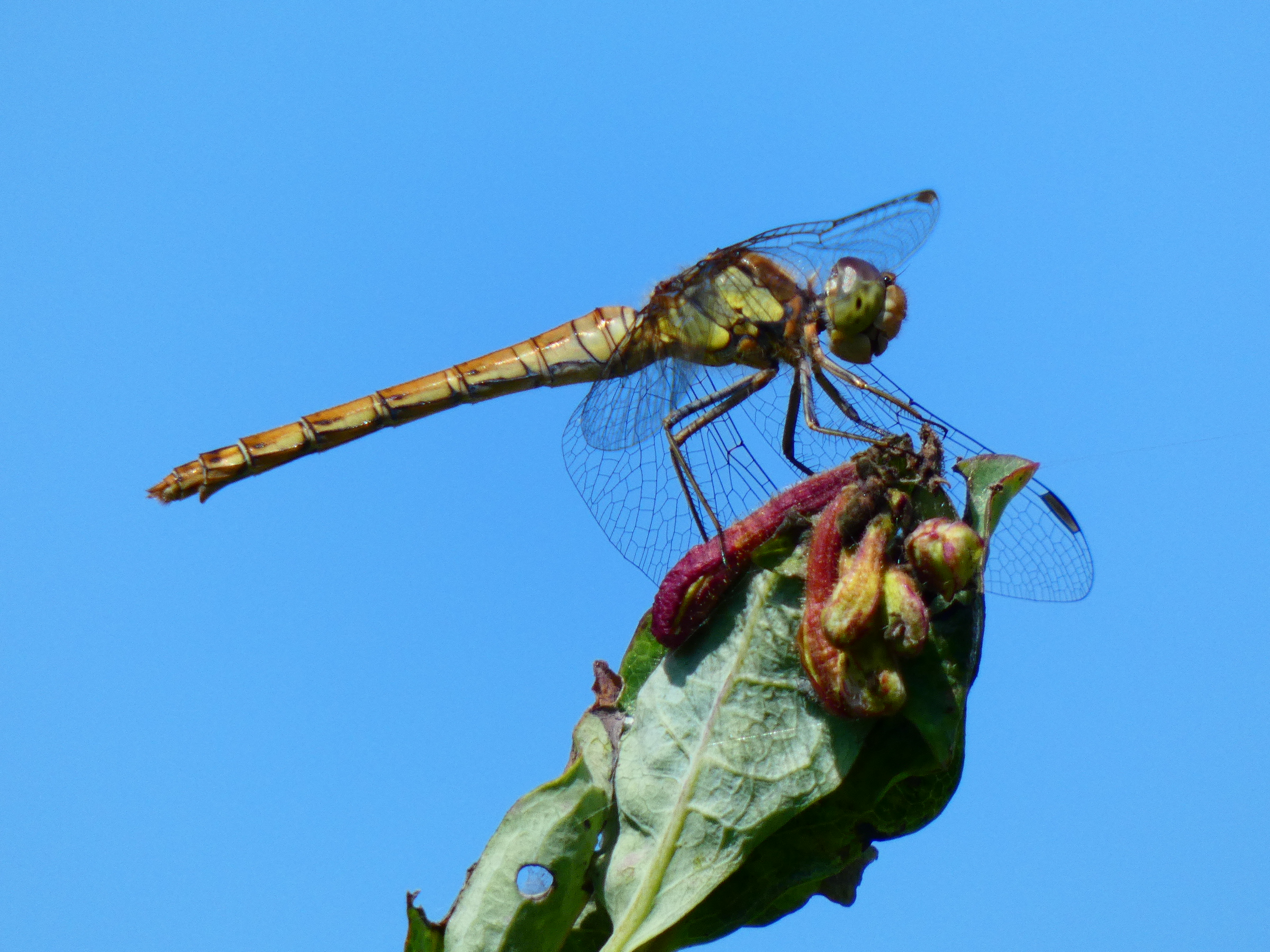Dragonflies and Damselflies

Southern Hawker Dragonfly
The taxonomic Order Odonata contains these recognisable, beautiful insects which are usually seen patrolling and aggressively defending their territories over ponds, lakes and slow-flowing rivers. We have 56 resident and migrant species in the UK, 35 large, robust dragonflies and 21 longer, thinner and more delicate damselflies. An easy way to tell the difference is that dragonflies hold their wings open when at rest whilst damselflies tend to close theirs in alongside their body.
They are one of the oldest groups of insects known and are not closely related to any other existing Order. There were dragonflies flying long before the dinosaurs appeared and they were some of the first winged insects to evolve, 300 million years ago. Oxygen levels were up to 15% higher than today and to survive these conditions insects, such as dragonflies, grew increasingly large, the largest fossil insect so far found being a dragonfly with a wingspan of 70cm and a diet consisting of insects, amphibians and other small vertebrates. As oxygen levels decreased, large insects began to reduce in size but, at the same time, they had to deal with competition from the feathered dinosaurs, birds, so they needed to become more agile fliers, smaller in size but extremely manoeuvrable. Adult Odonata are still predators but of smaller prey such as mosquitoes, gnats, other small flying insects, in fact anything small enough for them to seize which they catch in mid-air; they are the most effective predators in the animal kingdom with a 95% success rate. They have many features which help them with this role as super-efficient aerial predators including extremely large compound eyes for acute vision, spiny legs held forward to form a basket shape to catch prey and flight muscles that allow the fore and hind wings to beat independently, so increasing their aerial manoeuvrability.
The aquatic nymphs, or immature stages, that we regularly find in the River Foss, take one to five years to complete their development, depending on species but, unlike the adults, they are not brightly coloured being brown or green for camouflage to help with their role as one of the top invertebrate predators in our freshwaters. They feed on other aquatic insect larvae, aquatic worms, small fish and tadpoles, catching their prey using their hinged jaw and the large, pincer-like extension of their lower lip, known as the mask. The nymphs will shed their skin between 5 and 14 times as they grow before they are ready to leave the water.
When they are ready to emerge as adults, they stop feeding, crawl up a suitable plant stem and settle well above water level. The skin along the back splits and the adult struggles out, usually at night or early morning as they are vulnerable to predation at this stage before their wings expand, dry and harden, which takes about an hour. The beautiful adult colouring usually takes a few days to develop, reaching full colour at sexual maturity.
Unlike the nymph’s relatively long life, the adults only live a few weeks between April and November when they can often be seen dipping half their body into water. This is the female laying her eggs, which take about a week to hatch into nymphs, and the cycle begins again.

female Common Darter
